International Journal of Organic Chemistry
Vol.3 No.4(2013), Article ID:40420,6 pages DOI:10.4236/ijoc.2013.34032
Synthesis of N-Benzyl-3-anilinopropanamides and Cyclization to 4-Hydroxy-4-N-benzylamino-1,2,3,4-tetrahydroquinoline
1Department of Chemistry, University of Agriculture, Makurdi, Nigeria
2Department of Pure and Industrial Chemistry, University of Nigeria, Nsukka, Nigeria
Email: *lami.nnamonu@gmail.com
Copyright © 2013 Lami A. Nnamonu et al. This is an open access article distributed under the Creative Commons Attribution License, which permits unrestricted use, distribution, and reproduction in any medium, provided the original work is properly cited.
Received September 20, 2013; revised October 28, 2013; accepted November 12, 2013
Keywords: 3-Anilinopropanamide; N-Benzylanilinopropanamide; 1,2,3,4-Tetrahydroquinoline
ABSTRACT
Substituted 3-anilinopropanamides were converted to N-benzyl derivatives via uncatalyzed amine exchange reaction with benzylamine in up to 41% yield. Unprotected aniline nitrogen had been observed to inhibit facile cyclization. An attempt was therefore made to protect the N by acetylation prior to cyclization. During this process, facile ring closure occurred in the methoxy series to give 4-hydroxy-4-N-benzylamino-1,2,3,4-tetrahydroquinolines in up to 69% yield.
1. Introduction
A lot of attention has been generated by investigations in recent years into the chemistry of 1,2,3,4-tetrahydroquinolines. This is because tetrahydroquinolines are common structural skeletons in several biologically active molecules of industrial and pharmaceutical importance. Several of these compounds are naturally occurring. 2- Methyl-1,2,3,4-tetrahydroquinoline is present in human brain. Discohabdin C, a polycyclic system based on tetrahydroquinoline, is a marine alkaloid. Dynemycin, a natural antitumour antibiotic, has a complex structure built on the tetrahydroquinoline motif [1]. Many relatively simple synthetic 1,2,3,4-tetrahydroquinolines are in use or have been tested as potential drugs. The best known among them is shown in Figure 1: oxamniquine (1) a schistosomicide, nicainoprol (2) an antiarrhythmic drug and virantmycin (3) an antibiotic. Tetrahydroquinoline L-689,560 (4) is one of the most potent NMDA receptor antagonists (used in anaesthesia) yet found [2,3].
2. The 1,2,3,4-Tetrahydroquinolines
Hundreds of 1,2,3,4-tetrahydroquinoline (TQ) derivatives bearing various simple or complex substituents have interesting biochemical activity. Besides pharmaceutical applications, TQ derivatives are useful as pesticides, antioxidants and corrosion inhibitors [4]. 2,2,4-Trimethyl- 8-hydroxy-1,2,3,4-tetrahydroquinoline is a specific reagent for photometric determination of iron (II1) salts. Tetrahydroquinolines are used as active components in various types of dyes: for hair, acrylic fibres, polyesters, and polyamides. (2S)-2,6-Dimethyl-1,2,3,4-tetrahydroquinoline was used in synthesis of chira1 polymethine dyes with interesting optical properties. TQ derivatives are also widely used in modern recording technologies: as charge-transporting agents for electrophotographic photoconductors, as leuco dyes for thermal and pressure sensitive materials, as anti-irradiation filter dyes in photography, in the preparation of optical information recording media, as intermediates for photographic couplers, and as dyes for coloured electrostatographic toners [5,6].
3. Syntheses of 4,4a-Disubstituted 1,2,3,4-Tetrahydroquinolines
Among different nitrogen-containing heterocycles, tetrahydroquinolines and their derivatives stand out as an attractive group for synthetic and medicinal chemists as they are useful not only as pharmaceuticals and agro-

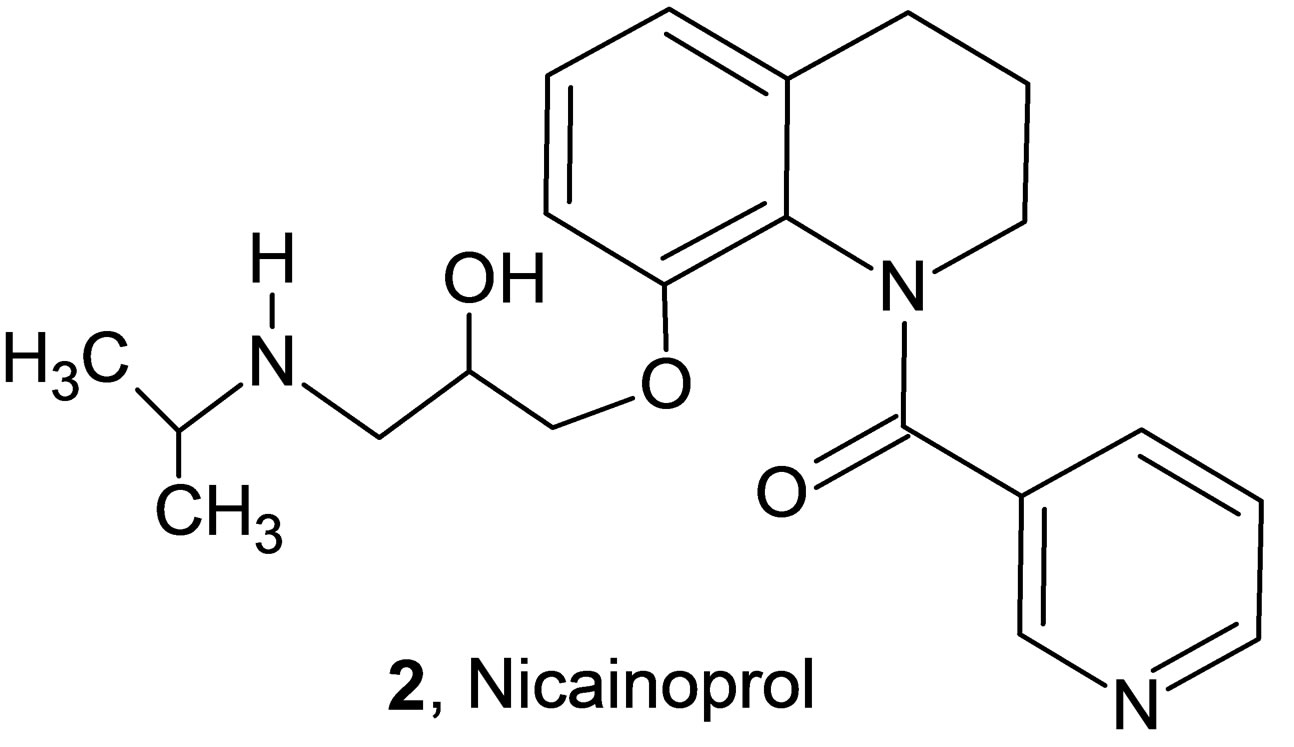
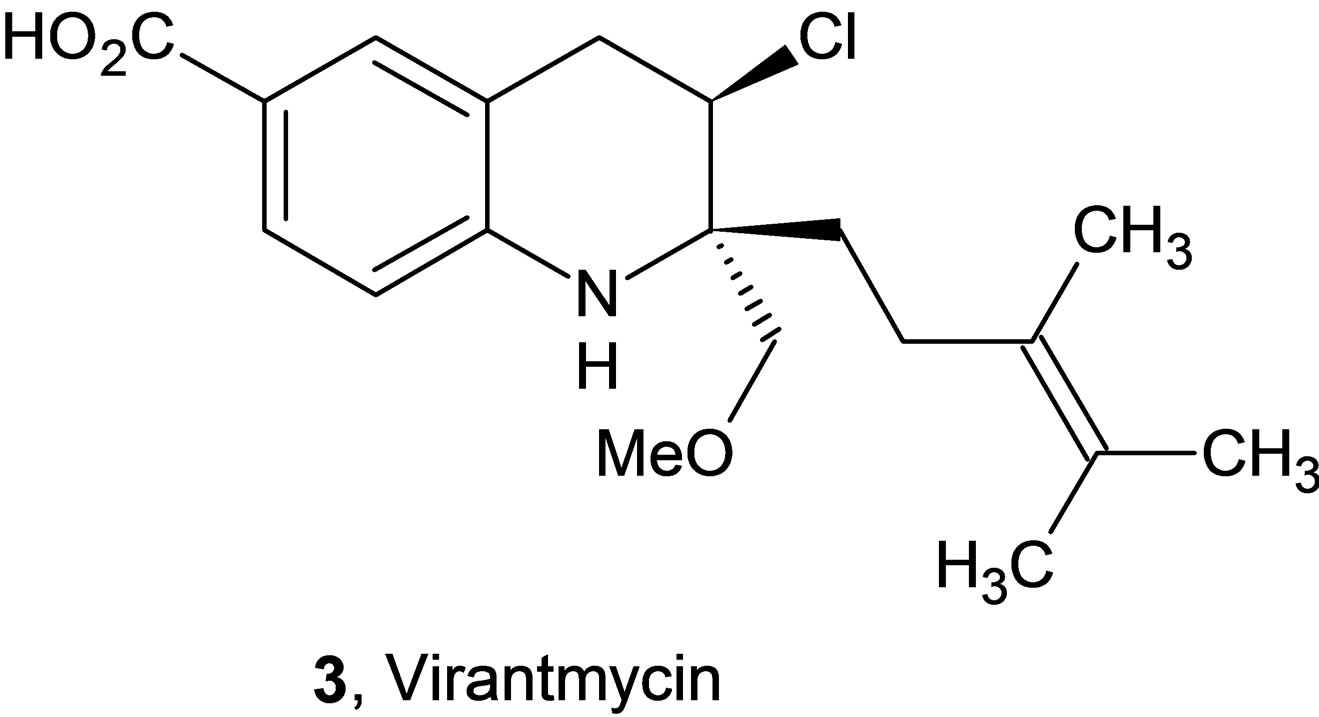
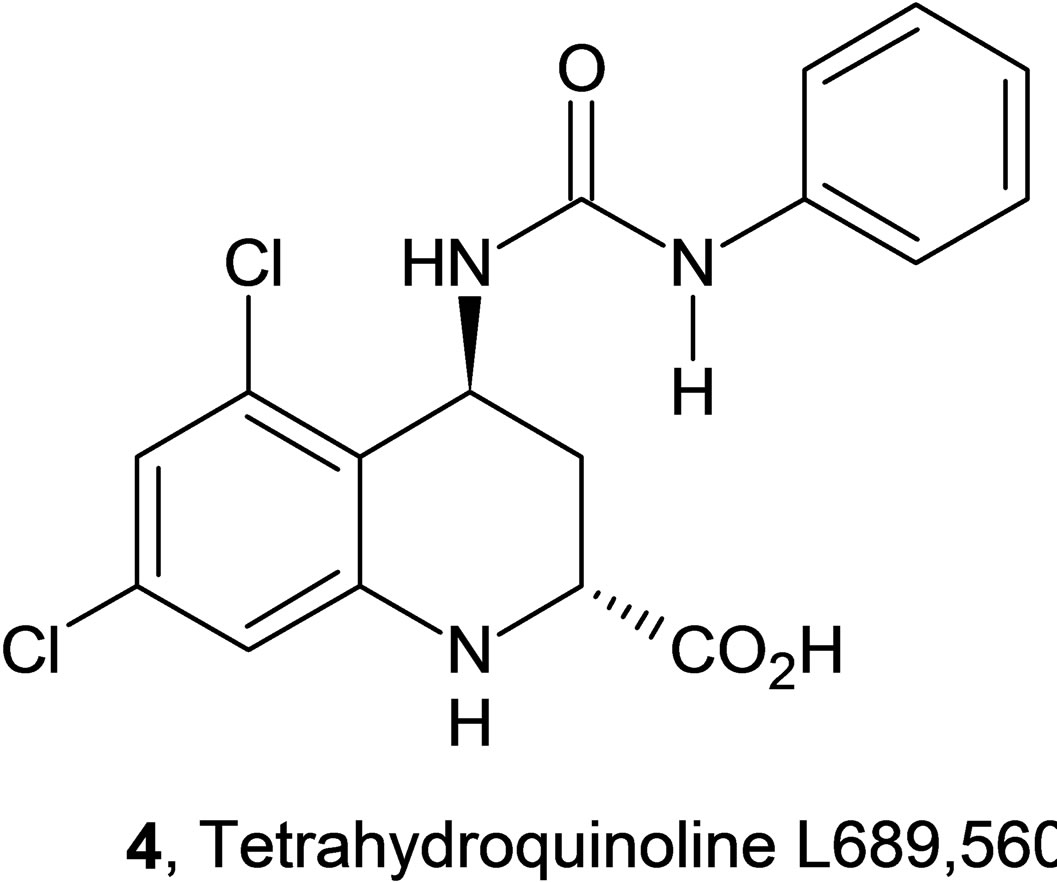
Figure 1. Some 1,2,3,4-tetrahydroquinolines in use as drugs.
chemicals, but also as building blocks in alkaloid synthesis [7]. The development of new efficient and convenient approaches to these molecules therefore remains an active research area.
Several synthetic methodologies for preparing tetrahydroquinoline derivatives offering good results have been reported [1]. However, most of them describe the synthesis of the TQ nucleus [8-10]. Nonetheless, there are still some features requiring improvement in these methods, e.g. the catalysts used are expensive, the systems require special atmospheres and organic solvents are always needed. For example, direct enantioselective access to 4-substituted tetrahydroquinolines by catalytic asymmetric transfer hydrogenation of quinolines requires six steps [11,12]. Thus, a procedure involving a low-cost, or no catalyst and simple and eco-friendly conditions might be very useful [13].
Apart from compound (4) which is a potent NMDA antagonist, many other 4-subsituted TQs like martinellic acid, (5) and Helquinoline, (6) displayed in Figure 2, are useful drugs.
The choice of method for TQ synthesis is determined
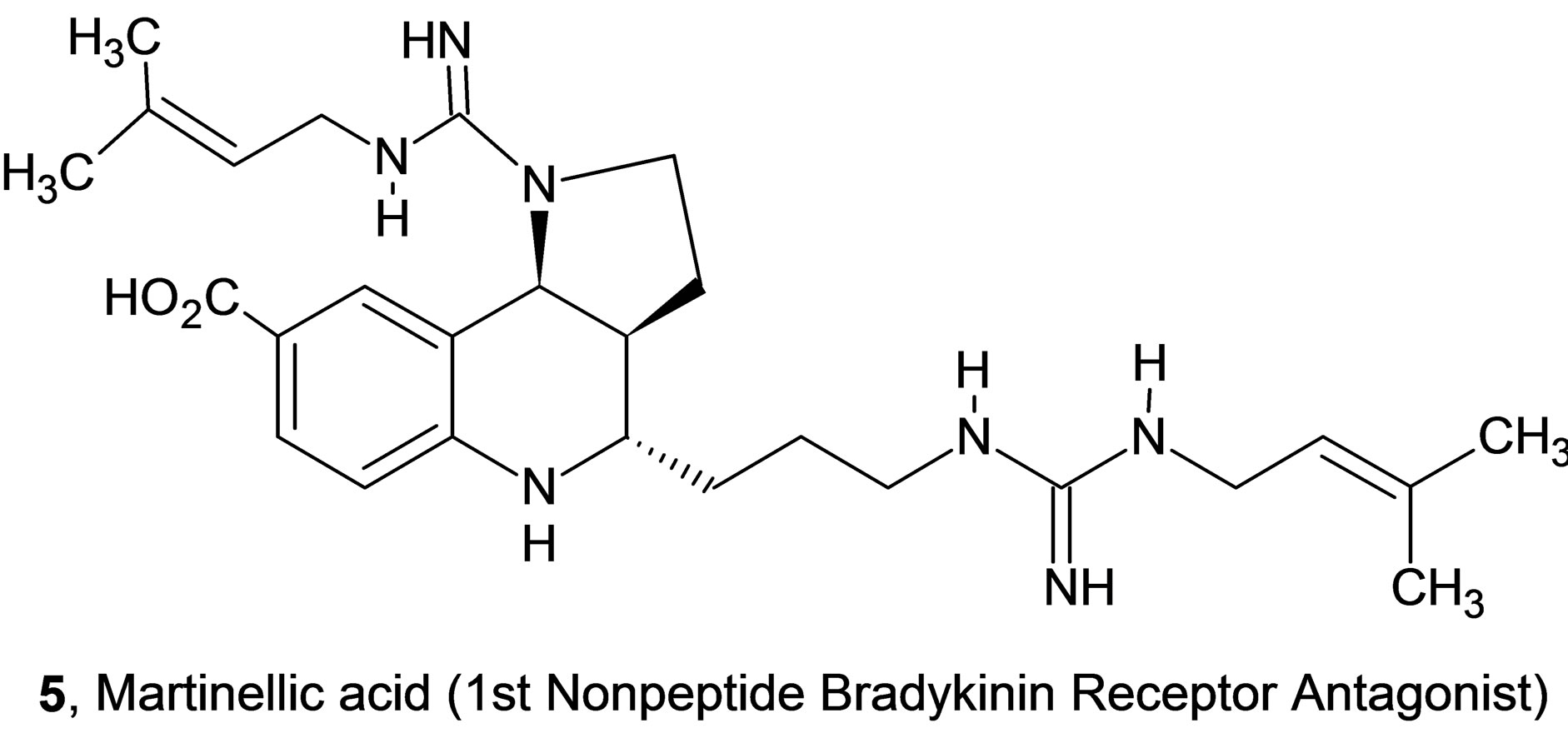

Figure 2. 4-Substituted 1,2,3,4-tetrahydroquinolines.
by key parameters like the nature, number and relative location of the substituent. Until the last decade, a lot of energy was devoted to development of synthetic routes to mono-functional derivatives of TQs while the bi-functional derivatives remained largely uninvestigated [14].
Therefore, one of the objectives of this work is to elucidate a cleaner synthetic route to the 4,4a-disubstituted TQ derivative. Also, it was desired to retain an amino side chain at the 4-position after cyclization, poised for nucleophilic addition of any desired side chain. Some Naryl/alkylpropanamides have been reported to have pharmacological importance as analgesics, antispasmodics, antihistamines and local anaesthetics [15]. The N-aryl/ alkylpropanamides were prepared solely for pharmacological purposes. Their cyclization to 1,2,3,4-tetrahydroquinolines, outlined in this work, has not been previously reported.
4. Synthesis of N-Benzyl-3-anilinopropanamides
The 3-anilinopropanamides used in this work were prepared, as elucidated in Scheme 1, via an acid-catalysed Michael addition using substituted anilines (7), acrylamide (8) and catalytic amounts of p-toluene sulphonic acid [16].
It was necessary to convert the primary amides to secondary amides because the former were transformed to the corresponding nitriles upon treatment with dehydrating agents. Attempted cyclization of the 3-m-toluidinopropanamide (the aniline nitrogen of which was protected by acetylation) using zinc chloride/acetic anhydride/acetic acid mixture in our laboratory, gave a white solid with a sharp strong band at 2250 cm−1 in the IR spectrum, characteristic of nitrile  stretching. Conversion of the 3-anilinopropanamides to N-benzyl-3-
stretching. Conversion of the 3-anilinopropanamides to N-benzyl-3-



Scheme 1. Synthesis of 3-anilinopropanamides.
Anilinopropanamides (9) shown in Figure 3, was achieved by an uncatalyzed amine exchange reaction with benzylamine.
5. Cyclization to 4-Hydroxy-4-Nbenzylamino-1,2,3,4-tetrahydroquinoline
In view of the fact that unprotected aniline nitrogen was reported to inhibit facile cyclization [17], an attempt was made to acetylate the N-benzyl-3-anilinopropanamides prior to cyclization. This was done by refluxing a mixture of the amide and acetic anhydride. In this process, cyclization occurred in the methoxy series forming methoxy-4-hydroxy-4-N-benzylamino-1,2,3,4-tetrahydroquinoline (10), as shown in Scheme 2.
6. Experimental
All melting points were taken on a Fischer-John’s melting point apparatus. Silica gel 60 PF 254 + 366 (UVactive) was used for TLC. Infrared spectra were taken on a Perkin Elmer Spectrum 100 FTIR spectrophotometer. 1H NMR spectra were obtained on a Bruker 400 instrument, using deuterochloroform with tetramethyl silane as internal standard. Microanalysis was carried out by Mickroanalytisches Labor Pascher, Remagen, Germany.
6.1. N-Benzyl-3-o-anisidinopropanamide
A mixture of 3-o-anisidinopropanamide (55 g, 0.28 mol) and benzylamine (30 g, 0.28 mol) was heated under reflux on a sand bath. After 48 hrs, solids formed and the mixture was dispersed in CHCl3 and filtered. The solid was recrystallized from benzene forming a white, fluffy amorphous compound (32.18 g, 40%), melting at 190˚C.
6.2. N-Benzyl-3-m-anisidinopropanamide
A mixture of 3-m-anisidinopropanamide (21.5 g, 0.11 mol) and benzylamine (11.79 g, 0.11 mol) was heated under reflux on a sand bath. Solids formed only after about one hour and the mixture was dispersed in CHCl3 and filtered. The solid was recrystallized from benzene

Figure 3. The N-benzyl-3-anilinopropanamides.
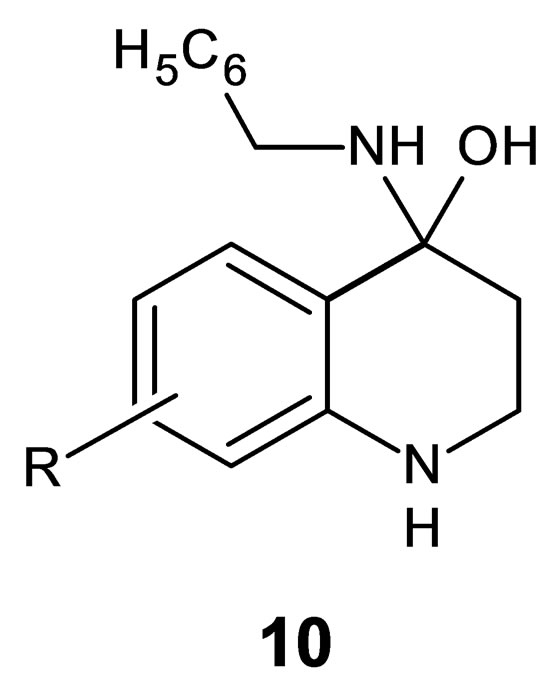

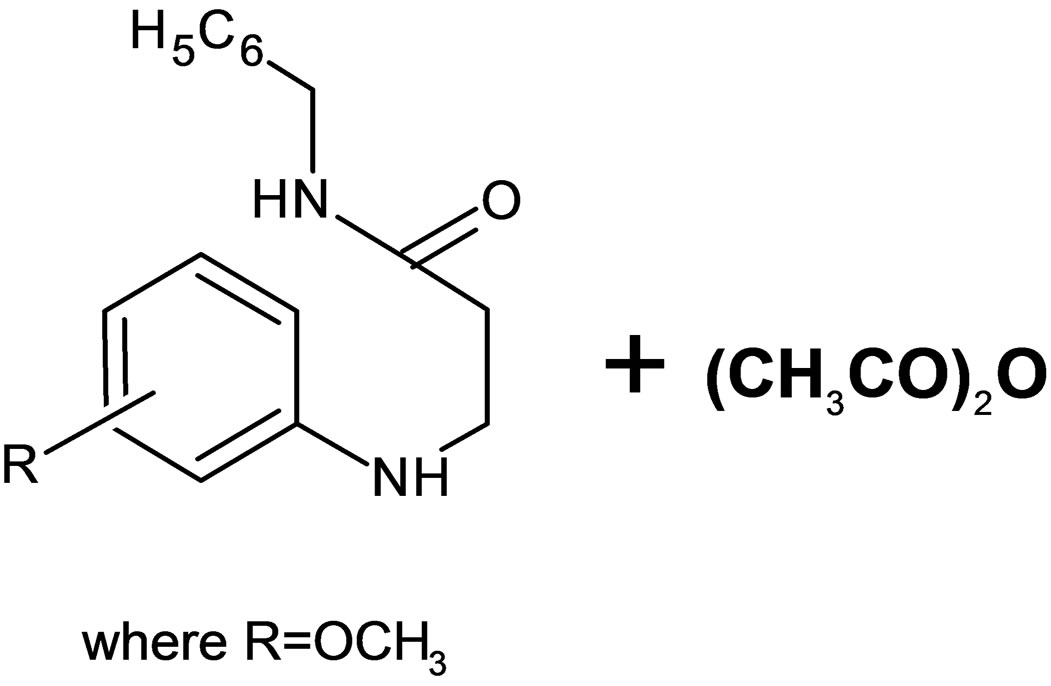
Scheme 2. Cyclization to 4-hydroxy-4-N-benzylamino-1,2,3, 4-tetrahydroquinoline.
forming white fluffy crystals (11.4 g, 36%), melting at 250˚C.
6.3. N-Benzyl-3-p-anisidinopropanamide
A mixture of 3-p-anisidinopropanamide (20.0 g, 0.10 mol) and benzylamine (10.7 g, 0.10 mol) was heated under reflux on a sand bath. Solids formed only after about one hour and the mixture was dispersed in CHCl3 and filtered. The dirty white solid obtained was recrystallized from benzene forming white amorphous substance (12.09 g, 41%), melting at 224˚C.
6.4. N-Benzyl-3-m-toluidinopropanamide
A mixture of m-toluidinopropanamide (60, 0.33 mol) and benzylamine (64.2 g, 0.66 mol) was put in a 250 ml round bottom flask fitted with a reflux condenser. This was heated on a sand bath (T = 160˚C - 170˚C) for twenty five hours. Ammonia was evolved and the reaction was monitored by TLC. Work up was done by washing several times with water (to remove benzylamine) until washings were neutral to pH indicator paper. The mixture diluted with CH2Cl2, dried over anhydrous Na2CO3, and the solvent removed leaving a thick oil.
6.5. N-Benzyl-3-anilinopropanamide
A mixture of 3-anilinopropanamide (35 g, 0.213 mol) and benzylamine (45.74 g, 0.42 mol)—a 1:2 ratio—was heated under reflux on a sand bath. After twelve hrs, the starting material spot was still very large. So a 1:1 ratio of starting materials was taken and refluxing resumed. Solids formed in the reaction vessel after two hours. The mixture was dispersed in CHCl3, filtered and solid recrystallized from benzene giving fluffy white needles (7.61 g, 14%), melting point 210˚C - 212˚C.
6.6. 7-Methoxy-4-hydroxy-4-N-benzyl- 1,2,3,4-tetrahydroquinoline
A mixture of N-benzyl-3-m-anisidinopropanamide (7.5 g, 0.027 mol) and acetic anhydride (4.06 g, 0.04 mol) was refluxed for thirty minutes. The reaction mixture was cooled, poured into distilled water. This was boiled to decompose excess acetic anhydride, the organic layer separated, diluted with CH2Cl2, washed thoroughly with water and dried over anhydrous sodium sulphate. The solvent is removed in vacuo and a thick orange liquid was obtained which crystallized on cooling. Recrystallization from chloroform gave a white solid (6.0 g, 69%) melting at 58˚C. Anal. Calcd. for C17H20N2O2: C, 71.80; H, 7.09; N, 9.85. Found: C, 72.05; H, 7.43; N, 9.13.
6.7. 8-Methoxy-4-hydroxy-4-N-benzyl- 1,2,3,4-tetrahydroquinoline
A mixture of N-benzyl-3-o-anisidinopropanamide (22 g, 0.08 mol) and acetic anhydride (11.9 g, 0.12 mol) was refluxed for thirty minutes. The reaction mixture was cooled, poured into distilled water. This was boiled to decompose excess acetic anhydride, the organic layer separated, diluted with CH2Cl2, washed thoroughly with water and dried over anhydrous sodium carbonate. The solvent was removed in vacuo and the resulting thick liquid gave three spots on TLC. The purified material crystallized on cooling and recrystallization from chloroform gave a soft white solid (7.0 g, 28%) melting at 54˚C - 55˚C. Calcd., for C17H20N2O2: C, 71.80; H, 7.09; N, 9.85. Found: C, 72.09; H, 7.39; N, 9.35.
6.8. 6-Methoxy-4-hydroxy-4-N-benzyl- 1,2,3,4-tetrahydroquinoline
A mixture of N-benzyl-3-p-anisidinopropanamide (10.0 g, 0.035 mol) and acetic anhydride (5.5 g, 0.053 mol) was refluxed for thirty minutes, cooled, poured into distilled water (200 ml) and boiled to decompose excess acetic anhydride. The organic layer was separated, diluted with CH2Cl2, washed thoroughly with water and dried over anhydrous sodium sulphate. The solvent was removed in vacuo and the resulting thick liquid was purified by TLC. The product, a light yellow oil (3.45 g, 30%) did not crystallize even after prolonged cooling.
6.9. 4-Hydroxy-4-N-benzyl-1,2,3,4- tetrahydroquinoline
A mixture of N-benzyl-3-anilinopropanamide (6.0 g, 0.024 mol) and acetic anhydride (3.62 g, 0.035 mol) was refluxed for thirty minutes, cooled, poured into distilled water (200 ml) and boiled to decompose excess acetic anhydride. The organic layer was separated, diluted with CH2Cl2, washed thoroughly with water and dried over anhydrous sodium sulphate. The solvent was removed in vacuo and the resulting thick yellow oil was purified by TLC. The product, a light yellow oil (2.4 g, 35%) did not crystallize even after prolonged cooling.
7. Results and Discussion
The N-benzyl-3-anilinopropanamides were prepared via protonation of the carboxamide group and the attack of the amine on the β-carbon of acrylamide. The elegance of this procedure was that it took place between the neat reagents, p-TOSA catalysing.
The high reactivity of the aniline ortho-carbon atoms towards electrophiles allows easy cyclization of anilines with an N-alkyl group carrying an electrophilic centre at the C-3. Such compounds were obtained by reactions of N-alkylidene anilines with allylmagnesium bromide. Physical and IR spectral data of the N-benzyl-3-anilinopropanamides are presented in Table 1 while their elemental analyses are presented in Table 2.
The N-H stretching frequencies occur as a range in the region 3300 - 2940 cm−1 with multiple strong bands in this region. This is expected of secondary amides which exist mainly in the trans-configuration. The free N-H band is observed as multiple bands since the amide group can bond to produce dimers with a cis-conformation and polymers with a trans-conformation. The amide II bands are found at lower frequency than that of the primary amides.
Elemental analyses of these N-benzyl-3-anilinopropanamides gave lower values for carbon than the calculated values. This is probably due to incomplete removal of chloroform, the solvent used for re-crystallization. Values for hydrogen and nitrogen agreed with the calculated values.
1H-NMR of the N-benzyl-3-anisidinopropanamides is displayed in Scheme 3. These are in agreement with subsequent results [18].
o-OCH3 δ(ppm): 7.60 - 7.57 (t, 1H, -NH-, H-11), 7.28 - 7.24 (m, 2H, 2Ar-H, H-15 and H-17), 7.17 - 7.12 (t, 1H,

Table 1. Physical and IR spectral data of N-benzyl-3-anilinopropanamides.

Table 2. Elemental analysis of the N-benzyl-3-anilinopropanamides.
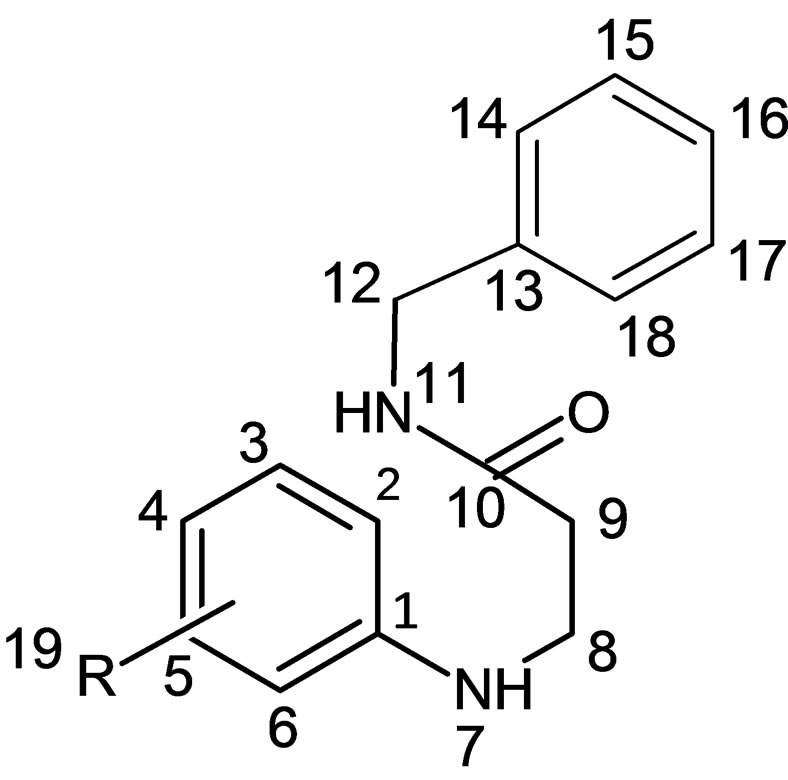
Scheme 3. 1H-NMR of the N-benzyl-3-anisidinopropanamides.
Ar-H, H-16), 6.87 - 6.85 (m, 2H, 2Ar-H, H-14, H-18), 6.69 - 6.67 (d, 1H, Ar-H, H-3), 6.60 - 6.57 (t, 1H, Ar-H, H-4), 6.55 - 6.53 (t, 1H, Ar-H, H-5), 6.23 (s, 1H, Ar-NH, H-7), 6.04 (d, 1H, Ar-H, H-6), 4.54 - 4.52 (d, 2H, -CO-NH-CH2- H-12), 3.81 (s, 3H, -OCH3, H-19), 3.28 - 3.24 (t, 2H, Ar-NH-CH2-, H-8), 2.55 - 2.5 (t, 2H, NH-CH2-CH2-, H-9).
m-OCH3 δ(ppm): 8.85 (s, 1H, Ar-NH, H-7), 7.60 - 7.57 (t, 1H, -CO-NH, H-11), 7.28 - 7.24 (m, 2H, 2Ar-H, H-15, H-17), 7.17 - 7.13 (t, 1H, Ar-H, H-16), 6.97 - 6.93 (dd, 2H, 2Ar-H, H-14, H-18), 6.87 - 6.85 (d, 1H, Ar-H, H-6), 6.80 - 6.76 (t, 1H, Ar-H, H-5), 6.74 - 6.71 (d, 1H, Ar-H, H-4), 6.64 (s, 2H, -CO-NH-CH2, -H-12), 3.85 (s, 3H, -OCH3, H-19), 3.368 - 3.35 (t, 2H, Ar-NH-CH2, H-8), 2.28 - 2.25 (t, 2H, Ar-NH-CH2-CH2-, H-9).
p-OCH3 δ(ppm): 8.67 (s, 1H, Ar-NH, H-7), 7.65 - 7.59 (t, 1H, -CO-NH, H-11), 7.28 - 7.26 (dd, 2H, 2Ar-H, H-15, H-17), 7.16 - 7.14 (m, 1H, Ar-H, H-16), 6.86 - 6.85 (dd, 2H, 2Ar-H, H-14, H-18), 6.77 - 6.75 (dd, 2H, 2Ar-H, H-3, H-5), 4.54 - 4.52 (d, 2H, -NH-CH2-, H-12), 3.66 (s, 3H, CH3-O-, H-19), 3.21 - 3.19 (t, 2H, -NH-CH2-, H-8), 2.55 - 2.53 (t, 2H, -CH2-CH2-, H-9).
8. Conclusion
Five N-benzyl-3-anilinopropanamides have been synthesized and characterized. Cyclization of the methoxy series to 4-hydroxy-4-N-benzyl-1,2,3,4-tetrahydroquinolines is hereby reported.
9. Acknowledgements
The authors are grateful to Mickroanalytisches Labor Pascher, Remagen, Germany for the elemental analysis done through V. C. Agwada. The independent assessors of this paper are also acknowledged for their very useful comments.
REFERENCES
- A. R. Katritzky, S. Rachwal and B. Rachwal, “Recent Progress in the Synthesis of 1,2,3,4-Tetrahydroquinolines,” Tetrahedron Letters, Vol. 52, No. 48, 1996, pp. 15031- 15070. http://dx.doi.org/10.1016/S0040-4020(96)00911-8
- B. S. Slusher, K. C. Rissolo, P. F. Jackson and L. M. Pullan, “Centrally-Administered Glycine Antagonists Increase Locomotion in Monoamine-Depleted Mice,” Journal of Neural Transmission. General Section, Vol. 97, No. 3, 1994, pp. 175-185. http://dx.doi.org/10.1007/BF02336139
- Y. Yoneda, T. Suzuki, K. Ogita and D. Han, “Support for Radio Labelling of a Glycine Recognition Domain on the N-Methyl-D-aspartate Receptor Ionophore Complex by 5,7-[3H]dichlorokynurenate in Rat Brain,” Journal of Neurochemistry, Vol. 60, No. 2, 1994, pp. 634-645. http://dx.doi.org/10.1111/j.1471-4159.1993.tb03195.x
- T. Nishiyama, Y. Hashiguchi, S. Sakata and T. Sakaguchi, “Antioxidant Activity of the Fused Heterocyclic Compounds, 1,2,3,4-Tetrahydroquinolines, and Related Compounds-Effect of Ortho-Substituents,” Polymer Degradation and Stability, Vol. 79, No. 2, 2003, pp. 225-230. http://dx.doi.org/10.1016/S0141-3910(02)00285-9
- V. Getautis, A. Stanisauskaite, T. Malinauskas, J. Stumbraite, V. Gaidelis and V. Jankauskas, “Hydrazones Possessing a Phenyl-1,2,3,4-tetrahydroquinoline Moiety as Hole Transporting Materials,” Monatshefte für Chemie/ Chemical Monthly, Vol. 137, No. 11, 2006, pp. 1401- 1409.
- V. Getautis, J. Stumbraite, V. Gaidelis, V. Jankauskas, A. Kliucius and V. Paulauskas, “Molecular Glasses Possessing a Phenyl-1,2,3,4-tetrahydroquinoline Moiety as Hole Transporting Materials for Electrophotography,” Synthetic Metals, Vol. 157, No. 1, 2007, pp. 35-40. http://dx.doi.org/10.1016/j.synthmet.2006.12.001
- V. V. Kouznetsov, C. M. Gómez, L. K. Parada, J. H. Bermuda, L. K. Méndez and A. M. Acevedo, “Efficient Synthesis and Free-Radical Scavenging Capacity of New 2,4-Substituted Tetrahydroquinolines Prepared via BiCl3- Catalyzed Three-Component Povarov Reaction, Using N-Vinylamides,” Molecular Diversity, Vol. 15, No. 4, 2011, pp. 1007-1016. http://dx.doi.org/10.1007/s11030-011-9330-5
- C. S. Yi and S. Y. Yun, “Ruthenium-Catalyzed Intermolecular Coupling Reactions of Arylamines with Ethylene and 1,3-Dienes: Mechanistic Insight on Hydroamination vs Ortho-C-H Bond Activation,” Organic Letters, Vol. 7, 2005, pp. 2181-2183. http://dx.doi.org/10.1021/ol050524+
- Y. Luo, Z. Li and C.-J. Li, “A Silver-Catalyzed Domino Route toward 1,2-Dihydroquinoline Derivatives from Simple Anilines and Alkynes,” Organic Letters, Vol. 7, 2005, pp. 2675-2678. http://dx.doi.org/10.1021/ol050826b
- T. Nishio, M. Tabata, H. Koyama and M. Sakamoto, “Photochemistry of N-(2-Acylphenyl)-2-methylprop-2- enamides: Competition between Photocyclization and LongRange Hydrogen Abstraction,” Helvetica Chimica Acta, Vol. 88, No. 1, 2005, pp. 78-86. http://dx.doi.org/10.1002/hlca.200490298
- G.-D. Isabelle, P. Gastaud and T. V. Rajan Babu, “Asymmetric Synthesis of Functionalized 1,2,3,4-Tetrahydroquinolines,” Organic Letters, Vol. 3, No. 13, 2001, pp. 2053-2056. http://dx.doi.org/10.1021/ol016018b
- M. Rueping, T. Theissmann, M. Stoeckel and A. P. Antonchick, “Direct Enantioselective Access to 4-Substituted Tetrahydroquinolines by Catalytic Asymmetric Transfer Hydrogenation of Quinolines,” Organic & Biomolecular Chemistry, Vol. 9, No. 19, 2011, p. 6844-6850. http://dx.doi.org/10.1039/c1ob05870c
- X. Yang, C. Xi and Y. Jiang, “CuCl2-Catalyzed One-Pot Formation of Tetrahydroquinolines from N-Methyl-Nalkylanilines and Vinyl Ethers in the Presence of t-Butylhydroperoxide,” Molecules, Vol. 11, 2006, pp. 978- 987. http://dx.doi.org/10.3390/11120978
- R. Degutyte, J. Stumbraite and V. Getautisa, “Synthesis of a Bifunctional 1,2,3,4-Tetrahydroquinoline Derivative: 4,4’-(1,4-Phenylene)di-(1,2,3,4-tetrahydrobenzo[f]quinolin-2-ol),” Archives for Organic Chemistry, No. 7, 2009, pp. 26-32.
- K. Takamura, A. Shioya, T. Yamamoto, S. Takama and Y. Nitta, “Studies on Analgesics of Aniline Series 3. Preparation and Properties of N,N-Dialkyl3-(substituted anilino)butyramide Series,” Chemical & Pharmaceutical Bulletin, Vol. 13, No. 2, 1965, pp. 211-217. http://dx.doi.org/10.1248/cpb.13.211
- V. C. Agwada and L. A. Nnamonu, “Synthesis of 3-Anilinopropanamides,” Chemical Society of Nigeria, Vol. 37, No. 2, 2012, pp. 98-101.
- R. C. Elderfield, W. J. Gensler, T. H. Bembry, C. B. Kremer, F. Brody, H. A. Hageman and J. D. Head, “Synthesis of Certain Simple 4-Aminoquinoline Derivatives,” Journal of the American Chemistry Society, Vol. 68, No. 7, 1946, pp. 1250-1251. http://dx.doi.org/10.1021/ja01211a032
- A. Y. Idris, M. I. Sule and M. S. Sallau, “Synthesis and Anticonvulsant Studies of Isomeric N-Benzyl-3-anisidinopropanamides (3-[(Methoxyphenyl)amino]propanamides),” Nigerian Journal of Pharmaceutical Sciences, Vol. 8, No. 1, 2009, pp. 118-127.
NOTES
*Corresponding author.
#Deceased.

